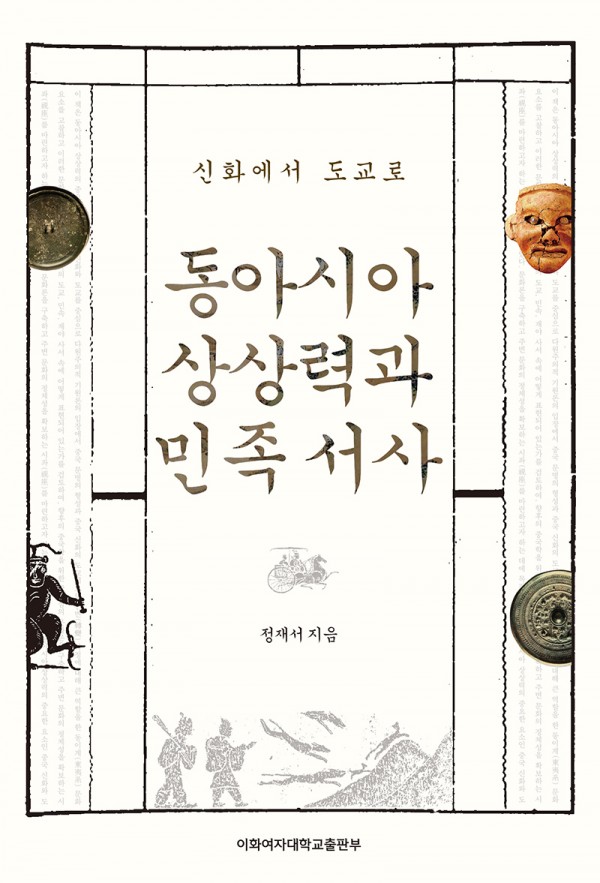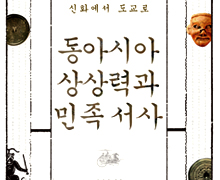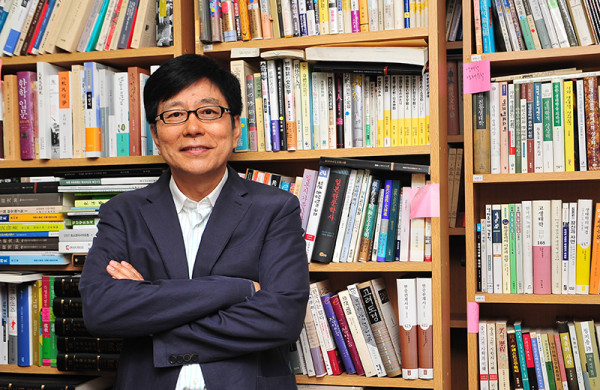본문
East Asian Imagination and National Narrative-From Myth to Daoism
Department of Chinese Language & Literature
by Prof. Jae-Seo Jung (jsjung@ewha.ac.kr)
This book is arranged in four parts.
In Part III: Comparative Review on Korean Daoist Tales, Chapter 6 uses the comparison with the Chinese myth of immortal enlightened hermits to analyze the Daoist imagination in Korea conveyed in myths regarding transcendental existence such as practitioners of Inner Alchemy (內丹), diviners, and holy persons as mentioned in Record of Eastern Sea Immortals (Haedong ijeok), which was Korea’s representative biographical treatise on such mythical figures. The resulting identification of strong shamanist inclinations such as the strong amalgamation of the three religions and the adoption of indigenous deities in Korean Daoism indicates the robust preservation of aspects of primitive Daoism as originating from Dongyi mythology. In Chapter 7, the comparative study of Daoist myths is expanded to encompass Japan as well. It reviews materials on the mythologies of the Yellow Emperor, Holy Mother of Mt. Seondosan, and Shinto from China, Korea, and Japan, respectively, in order to identify distinctive features of political appropriation and national identity expressed in each country’s tales. The three nations share similarities in exploiting Daoist myths as political tools to justify and mystify royal authority, but the striking aspect of the case in Japan is that the country successfully made the great logical leap from Daoist myths to imperialism in the modern age.
Part IV: Comparative Review on Korean Tales from Unofficial History studies the unofficial history and cultural theories that describe the ancient history of Korea from an independent and nationalist standpoint in comparison with Chinese myths and Daoist imagination. This is because these materials mostly hold conflicting claims against Chinese records of ancient history. Chapter 8 reviews Records of Historical Accidents about Ancient Korean Nations (Hwandan gogi), a compilation of several unofficial history books, and presents two different positions over its authenticity, one being that the book was preserved through the secret transmission of forbidden books and the other being that it was a product of historical fabrication created in the modern era. However, this record of prehistoric Korea is noteworthy since it sought the transformation of historical narratives by appropriating Chinese mythology and the Daoist imagination, which can be interpreted in myriad ways through the perspective of “rewriting” the history of the Korean people. The reflection of Dongyi myths in the description of history gives particular emphasis to the legendary figure of Chiyou who fought against the Yellow Emperor, while desacralizing the Chinese sage kings Yao, Shun, and Yu from the standpoint of countries peripheral to China. The book also argues that the Daoist myth of immortals in the three sacred mountains actually originated from ancient Korea, and identifies the emphasis on the well-being of the community as the point of difference in relation to Chinese Daoism. Chapter 9 deals with both Chinese myths and Daoistic imagination embodied in Epic of the Emblem City (Budoji) and Historical Account of Gyuwon (Gyuwon sahwa). The Budoji dismantles the myths surrounding Yao, Shun, and Yu, and it is especially intriguing that the book gives an entirely different perspective from China on the relationship between Shun and his father Gusou. Negative perception towards the sage kings is shared by almost all unofficial histories and ethnic religions such as the Teachings of Jeungsan (Jeungsan-gyo), which is noteworthy as a critical stance of peripheral cultures over the idealized dynastic myths that form the basis of Sino-centrism. Gyuwon Sahwa embraced a number of myths, particularly from Classic of Mountains and Seas (Nanshan jing 山海經) among the Chinese classics, which enriched the content of ancient Korean history. For instance, the book endeavored to deviate from China in relation to texts on Gojoseon, by adding unique annotations or reinterpreting records on the Dongyi culture through the means of metonymy and linguistic transposition. Through these efforts, the book attempted to subjectively rewrite national history based on the concept of counter-discourse as opposed to the established conventions of ancient history. Finally, Chapter 10 delves into Yukdang Choi Nam-seon’s Bulham culture theory, a renowned cultural discourse formulated to encompass Korea’s founding myth of King Dangun, with a focus on the acceptance of Chinese myths and Choi’s view of Chinese culture. The Bulham culture theory is considered a pioneering notion of his time although the theory is limited as a counter-discourse against Japanese imperialism, as shown in its pluralistic perception of Chinese culture and the idea of Asian community based on the theory.

* Related Book: East Asian Imagination and National Narrative-From Myth to Daoism was published by the Ewha Womans University Press in Korean on June 30, 2014, 348 page
<中文提要>
東亞想象力與民族敘事:從神話到道教
鄭在書(梨花女大 中文系 敎授)
中國神話與其嫡系傳承的道教是東亞想象力的重要基礎。東亞諸國的文化在相當程度上共享著中國神話與道教的想象力。這是因為中國大陸從一開始就以開放的態度,接受和融合周邊的諸文明, 并創造出新文明, 然後又把它傳播到周邊的關係。中國神話成為具有互文性的形態, 而道教從發生初期就具有相當多的周邊文化因素, 於是中國神話與道教本身具備著被相鄰國家積極接受的可能性。這本書在文明論的觀點, 考察中國神話的本質與道教之起源;并通過對作品的個案研究,從歷史的觀點探索其在中國和韓國是如何發生了變異。
該書圍繞以下三個主要研究目的展開討論:
第一, 以關於形成中國文明的多元論認識為前提, 通過積極運用紅山文化等在上古東北亞各國文化共存地區出土的最近考古資料, 確認中國與韓國古代文化起源的實體, 探索其實體在兩國的後代文化當中是如何延續下來的。
第二, 從原始宗教薩滿教和周邊文化東夷系神話的關聯性上, 掌握并考察東亞想象力的主要源泉之一的道教是如何形成的,并以開放的視角, 對一向被認為是中國“土生土長”的道教, 將其與韓國古代文化之間聯系起來,打開一個可以進行討論的平台。
第三, 在以上兩點論述的基礎上, 考察韓國道教傳說、在野歷史故事、自生的文化論等,是如何受到中國神話與道教想象力的影響, 把握韓國道教的固有性、在野史學對於中國上古史的修正主義的認識,探究對於周邊文化的認同和對中國文化的多樣解讀的可能性。
通過大量材料的分析與論證, 本書的最後結論是: 因薩滿教和東夷系神話的影響, 道教產生於中國多元文明的土壤中, 在這一過程中, 韓國上古文化與中國文明有著非常密切的關係。此後, 以中國神話和道教為中心的東亞想象力對中國和韓國的傳統文化産生了極大影響, 韓國的道教傳說雖然受到中國道教的影響, 但卻仍然保存上古的土著要素, 還通過政治的專有方式, 運用於王權的正當化。韓國在野歷史故事對中國神話的脫神聖化聲音, 是為鼓舞韓國民族認同而“重寫”歷史的產物, 但其內面卻包蘊著對於上古大陸的多元文化狀況的記憶,而該記憶有助於對於中國文明的多樣的解讀。
近代初期, 中國為了對抗文明西方起源說, 主張多元論, 并強調了中國文明的固有性。但是, 對於東亞內部的文明和歷史, 中國傾向於保持向心的、內向的思維。如果我們不把東亞想象力的源泉卽中國神話和道教僅僅視爲“土生土長”的產物, 若從周邊文化的觀點也打開一條路,而選取開放的、多元的態度, 必定會使中國文化的解釋更為豐富、多彩,進而成為互惠地認識各國文化的極好基礎。
在這種意義上來看, 此書對於中國文明的“新版單元論”表示關注, 認為道教的產生是來自於和周邊文化交涉的結果, 對於整合性的中國上古史提供不同的觀點, 其目的絕不在於解構中國文化, 而在於擴大解釋可能性而達到理想的文化生態境界。為達到此目的,這本書也許可以說是具有參考價值的資料。

